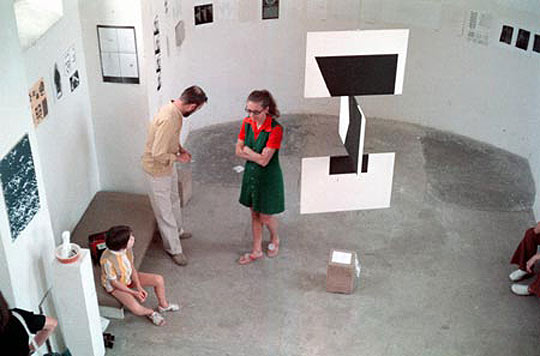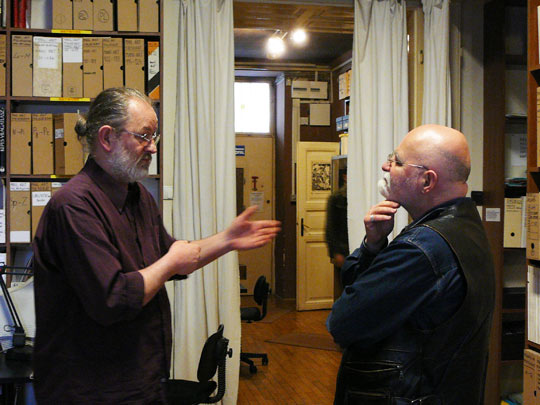Art in Hungarian, or művészet magyarul (m+m=N+1)
(a project featuring the motto of the Budapest Spring Festival: "Hungarian art, Hungarian artists") [video]

[lecture] The most banal call for projects can present a challenge, if I am able to find an interpretation of it as an impossible task. The task always starts out from otherness, or more accurately an improbable sameness needs to be spotted to make it into information (+1). The "improbable" is a term in informatics, where information is defined as an improbable situation: the more improbable, the more informative. This means that in order to get started, I need to look for the ‘exit’ in the festival’s local motto that takes me into the direction of the global, since it is my contention that it is only in a global context that any local product/outcome can gain its real meaning and at the same time its local value. The correct "answer" is always very simple, like for example Charles Sirato’s Dimensionist formula: N+1.
The title “művészet magyarul” i.e. art in Hungarian, can be understood through two Dimensionist approaches: Let us first regard the concept of art (művészet) and then that of Hungarian (magyar) as the past, or “N”, and in both cases the other concept will denote “+1”, i.e. the future. It concludes from this that art is only seen as Dimensionist by Hungarians if it is +magyar and “magyar” is only Dimensionist if it is +művészet. The result we expect to get – m+m, which is an adoption of the formula “N+1” to our situation – is the self-identical, living present.
When I was exploring the idea of the self-identical, living present, I remembered a definition of the present I had come up with in 2002 for an electronic scrolling display board, which, as an experiment, I placed in the context of 2007 by using an ensemble of objects: an EU flag drying on a clothes horse I had found represents a new, inductive future and is ‘engaged in dialogue’ with the red, white and green (see also: Dimensionist tricolour) symbolising the deductive past. In this improbable context, according to the definition of the present shown by the neon sign placed quarter a century into the future, the "living present" is twoness. In that present the essence of Dimensionism is twoness, or in other words parallel reality, which is the improbable alteration between the tendencies to the deductive past and the inductive future.
In order to better understand this construction, I decided to collect more information so, viewed from a heraldic perspective, I connected the Dimensionist triple definition of the present with the meanings of the Hungarian tricolour of 1848-49: red/power (deductive with respect to the past), white/loyalty (inductive with respect to the future) and green/hope (alive in the present). – Does it surprise you?! – Let’s take it further then. – According to the definition of the present seen on the neon sign: hope (present-twoness) is the improbable alternation between power (past-present) and loyalty (future present). – This realisation made me curious about how my method could be applied to the Hungarian national coat of arms: red and white (past and future) alternate on the right, while the green (present) of hope is at bottom left, surmised by the double cross [the symbol of Christian royal power] in the white (future) of loyalty set in the red (past) field of power. The green of hope on the left of the coat of arms is the Dimensionist "+1" in relation to the right side. And what is truly surprising is this: the structure of the Hungarian models the two hemispheres of the brain with "+1" (the green of hope) representing the area of rationality on the left. This is interesting also in the context of tradition: the right side of the coat of arms (N) symbolises the tradition of the House of Arpad and its left side (N+1) that of Dimensionism. Taken on the whole, the inter-referenced meanings of the basic components show that in its 21st-century interpretation the Hungarian coat of arms is the emblem of a national superseding itself.
Having established that the Hungarian language and way of thinking is dimensionist in its visual connections, I found another "+1" dimension that helps the understanding of the traditional friendship between Poles and Hungarians: Pawel Petasz’s work on identification is the test of the Dimensionist method: it is simple, clear, pure, unambiguous and fascinating. The solution: art (művészet) in Polish is Hungarian, and in Hungarian (magyarul) it is Polish. This is the Dimensionist "művészet magyarul", the Hungarianification of art, or the artification of Hungarian.

